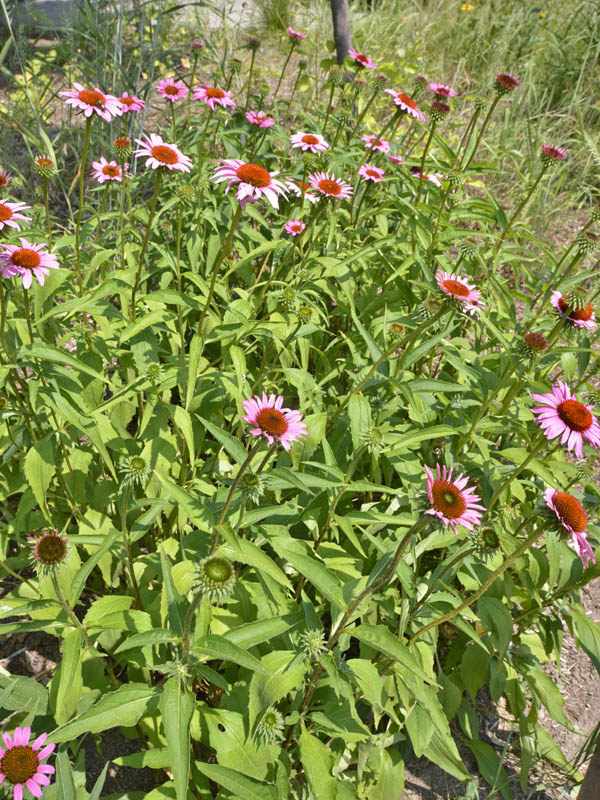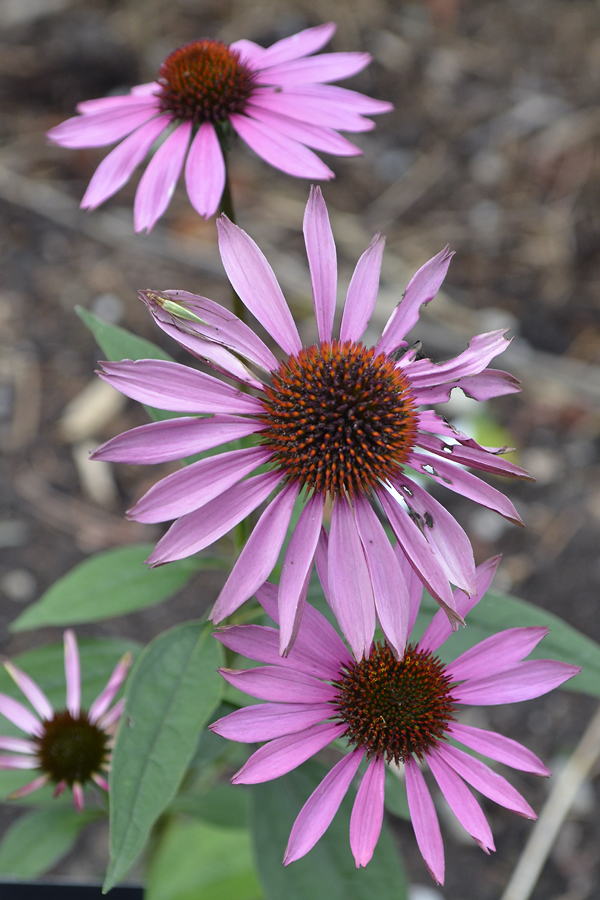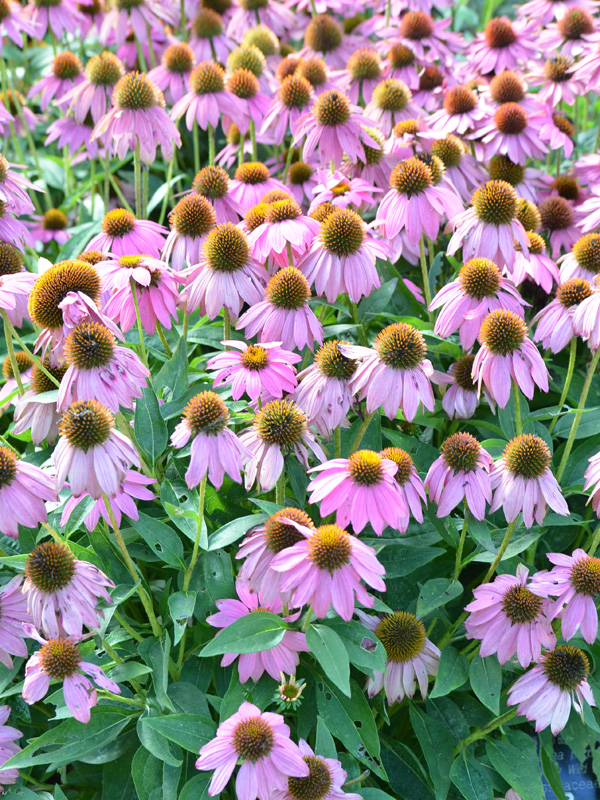
Perennials, Weeds > Echinacea > Echinacea purpurea > Echinacea purpurea
Echinacea purpurea
Eastern Purple Coneflower, Echinacea, Snakeroot
Origin: Central to southeastern United States of America. Genus name from the Greek word 'echinos' which means hedgehog or sea-urchin, in reference to the flower's prickly bracts.
| Family |
| Asteraceae |
| Genus |
| Echinacea |
| Species |
| purpurea |
| Category |
| Perennials, Weeds |
| Pronunciation |
| USDA Hardiness Zone |
| 3 - 8 |
| Canadian Hardiness Zone |
| 1a - 8a |
| RHS Hardiness Zone |
| H4 - H7 |
| Temperature (°C) |
| -40 - (-7) |
| Temperature (°F) |
| -40 - 20 |
| Height |
| 60 - 90 cm |
| Spread |
| 60 - 90 cm |
Photographs
Description and Growing Information
Flowering Period
| General Description |
| Echinacea purpurea or Purple Coneflower is a rhizomatous herbaceous perennial with daisy-like, red-purple flowers. |
| Landscape |
| Plant in large groupings in a naturalized butterfly garden or herbaceous border. The purple flowers are excellent for cutting, drying or left to provide winter interest. Commonly paired with Black-Eyed Susans, creating a nice contrast in colour and form. |
| Cultivation |
| Easy to grow in full sun to part shade, in average, well-drained soil. Water regularly but do not overwater. Best flowering in full sun. Tolerant of drought, clay or shallow rocky soils, heat, humidity and deer. Self-seeds freely; deadhead if you do not want seedlings the following season. Divide clumps when overcrowding occurs. |
| Pests |
| Possible problems include: Japanese beetle and leaf spot. |
| Habitat |
| Moist prairies and open woodlands. |
| Leaf Description |
| Mostly basal leaves up to 15 ⨉ 10 cm, dark green, ovate-lanceolate. Leaves on the stem are tapered to the base, denticulate, sometimes entire. |
| Flower Description |
| Red-purple ray florets 3 - 8 cm in diameter, drooping slightly. Prominent central cone of orange disc florets. Attract birds and butterflies. |
| Fruit Description |
| Cypsela, a dry fruit formed from a double ovary, of which only one develops into a single seed. |
| Notable Specimens |
| The A. M. Cuddy Gardens, Strathroy, Ontario, Canada. |
| Propagation |
| From seed sown outdoors in autumn or in winter in vented containers kept in a cold frame or unheated greenhouse. Seeds should be stratified if sowing indoors. Propagation also by division of the rootball. |
| Ethnobotanical Uses (Disclaimer) |
| Echinacea was highly valued for its medicinal purposes by the Native Americans. It served many purposes including pain relief, anti-inflammatory, toothache relief, cough suppressant, cold medicine, to soothe a sore throat and prevent and treat infections. It was also used as an antidote to snake venom and other poisons. |




